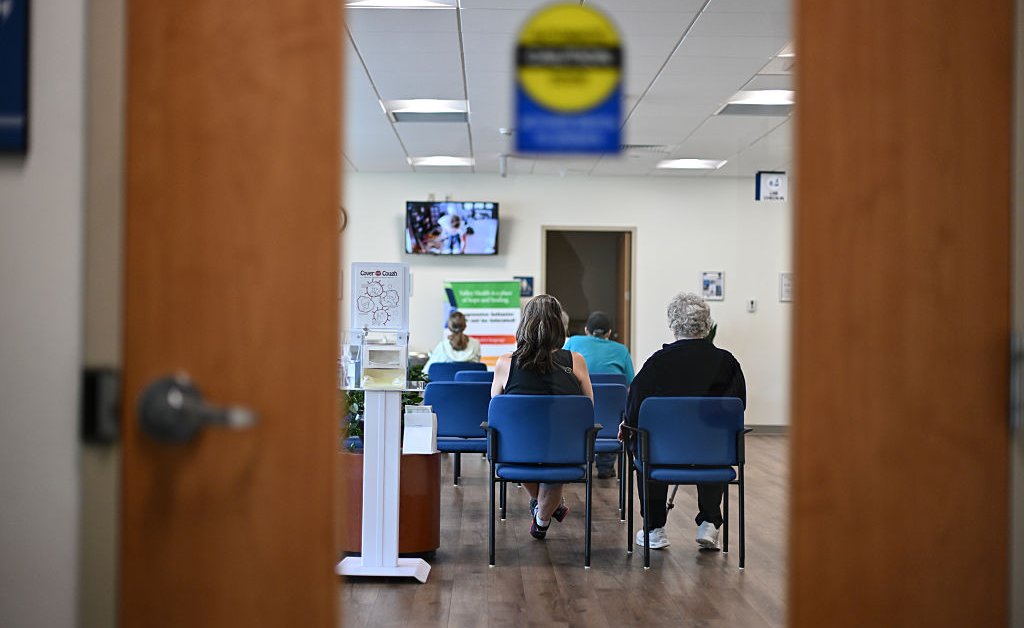Medicaid, the health insurance program for low-income Americans that provides coverage for more than 70 million people, faces its biggest overhaul in decades under President Donald Trump’s “One, Big, Beautiful Bill,” a massive tax and spending package now being considered by the Senate that would slash its funding.
Both the House and Senate versions of the bill, which is still undergoing changes as the upper chamber votes on amendments, would reduce funding for the program by hundreds of billions of dollars, according to the nonpartisan Congressional Budget Office (CBO). Nearly 12 million adults could lose health insurance because of the proposed cuts in the Senate’s revised bill over the next decade, the CBO estimated in a Saturday report. Much of the cuts are expected to come through imposing new administrative requirements on enrollees, or risk losing their coverage.
The White House has rejected the CBO’s findings, insisting that the cuts to the program will only reduce fraud and waste. “President Trump pledged to protect and preserve Medicaid, and that’s exactly what The One, Big, Beautiful accomplishes by kicking illegal immigrants off the program, implementing commonsense work requirements, and enforcing basic eligibility verification to combat fraud,” White House spokesman Kush Desai wrote to TIME.
The House narrowly passed the bill in May, and lawmakers are now working in an effort to pass the proposed legislation by a July 4 deadline imposed by Trump. The proposed Medicaid cuts have been contentious among Republicans, some of whom have been wary of their potential impact. Senator Thom Tillis, a Republican of North Carolina, has vowed to vote against the bill unless his concerns over the cuts are addressed.
Here’s what to know about Medicaid.
What is Medicaid?
Medicaid was created following the passage of the 1965 Social Security Amendments under President Lyndon B. Johnson, according to the National Archives. The law established both Medicare, which generally provides health insurance coverage for Americans aged 65 and older, and Medicaid, which serves low-income people.
Medicaid is financed jointly by state and federal governments and accounts for about a sixth of health care spending in the U.S. It’s a hugely popular program among Americans: More than 80% have a positive view of Medicaid, according to a survey conducted earlier this month by nonpartisan research organization KFF.
The Affordable Care Act enabled states to expand Medicaid eligibility to include non-elderly adults whose income was up to 138 percent of the federal poverty level—a national median of $44,367 for a family of four this year. Forty states and Washington, D.C., have so far adopted the expansion, 90% of which is funded by the federal government.
During the COVID-19 pandemic, Congress allocated additional Medicaid funds so recipients could maintain “continuous coverage,” requiring states to keep most people enrolled in the program regardless of income in exchange for the enhanced federal funding. Continuous enrollment concluded at the end of March 2023, and an “unwinding” process began.
Some states have alternative names for Medicaid, such as DenaliCare in Alaska, KanCare in Kansas, and SoonerCare in Oklahoma.
How many people are enrolled in Medicaid?
Medicaid enrollment has stood at around 20% of the total U.S. population for the last several years, the Pew Research Center reports.
Some 71.3 million low-income people in the U.S. were enrolled in the program in March 2025, more than half of whom were adults, according to a report from the Centers for Medicare & Medicaid Services (CMS). The figure was notably higher in recent years: Roughly 100 million people were enrolled in Medicaid at some point in 2023, according to a December 2024 report by The Medicaid and CHIP Payment and Access Commission. The numbers have declined following the end of continuous enrollment, however, as states have resumed disenrolling people from the program.
Read more: Medicaid Expansions Saved Tens of Thousands of Lives, Study Finds
The proportion of people enrolled in the program varies significantly between states. More than 30% of residents in Louisiana and New Mexico are covered by Medicaid, according to KFF, compared to just 12% in Wyoming and North Dakota.
Who is eligible for Medicaid?
The federal government sets broad eligibility requirements for Medicaid. It requires states to cover some groups when they fall below certain income levels, including pregnant women, families with children, disabled people, and most children in foster care.
But since the program is state-administered, Medicaid qualifications vary on a state-by-state basis. For instance, some immigrants may be eligible for coverage in states such as New Jersey or New York. One of the provisions in the Senate version of Trump’s tax and spending bill was intended to cut federal funding to states that use Medicaid to provide health care to undocumented immigrants. However, that part of the bill is in limbo after the Senate parliamentarian found that the measure did not comply with Senate rules.
Are Medicaid recipients required to work?
Current regulations in most states do not require Medicaid recipients to work. In Georgia, however, applicants are required to prove that they completed at least 80 hours of work or volunteer services to receive coverage. Because of this verification system, a ProPublica report found that Georgia enrolled only a fraction of Medicaid-eligible people: some 7,500 of the estimated 250,000 eligible residents.
Attempts to implement work requirements in Arkansas were struck down by a federal court in 2019. A federal judge blocked similar requirements in Kentucky from taking effect the previous year, and Governor Andy Beshear halted efforts to impose them in 2019 shortly after taking office.
Idaho, Kentucky, and Indiana have adopted legislation to impose work requirements this year, according to KFF. Other states are weighing imposing similar measures. And potential work requirements are being considered on a federal level in Trump’s “One, Big, Beautiful Bill.” The package would require Medicaid recipients from ages 19 to 64 to verify that they work at least 80 hours a month, or are training for a new job, studying, or volunteering. People’s work status would be checked twice a year.
Most working-age adults on Medicaid are employed, or have a disability or caregiving responsibilities, according to KFF.




